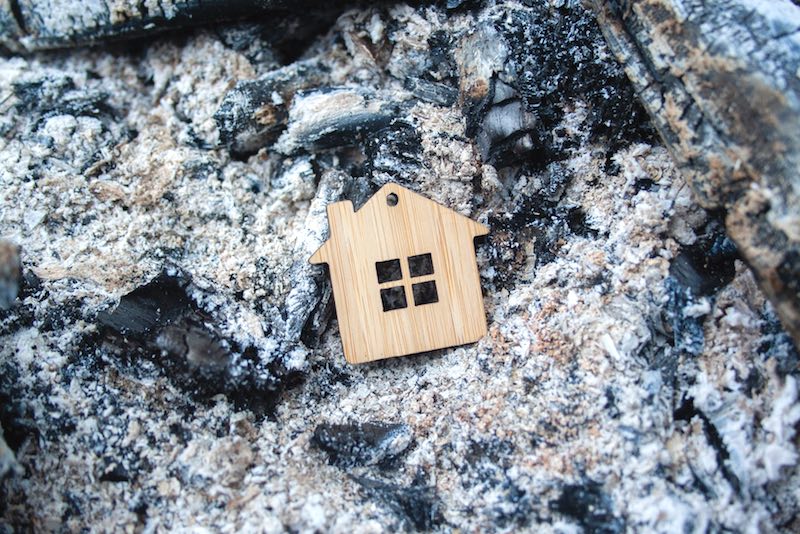
This year has been a rollercoaster for every industry. With global economies expecting to shrink significantly throughout the end of the year, it’s the best time to take stock of what real estate can expect as the year closes and what to expect into 2021 and beyond. There are lots of opinions, but in times like this, it is always best to stick with the actual facts and some probable expectations as they relate to those facts. As I like to say, it’s just math. By figuring out what might happen and taking into account things like total jobs permanently lost and potential evictions and mortgages not current, real estate investors may be able to seize opportunities they might not see again in their lifetimes.
Let’s start with jobs lost. There are so many online resources for this and one that I personally follow is the Economic Policy Institute or Epi.org. According to EPI, the U.S. economy is still down 10.7 million jobs from where it was in February, before the pandemic hit. Using average monthly job growth over the year ending February 2020 as the counterfactual, the jobs deficit is easily over 12 million. That’s 10.7 million fewer jobs we have than in February, plus 1.4 million jobs we would have added if the recession hadn’t occurred. Further, nearly a quarter million jobs in September—247,000— were temporary jobs related to the decennial census that will disappear in the next few months.
As bad as these numbers are, they understate the economic pain. These counts of the unemployed do not take into account the millions of workers who have left the labor force or were misclassified as employed but not at work or had their hours cut. Only those counted as unemployed can be classified by duration. The economic pain easily extends to over 33 million in the economy today, and that doesn’t include those who had lost their jobs and regained employment but got behind on their bills or those who lost loved ones and providers to illness.

The ripple effect of these lost jobs has massive implications on real estate. An estimated 27 percent of adults in the U.S. missed their rent or mortgage payment for July, according to a nationwide survey conducted by the U.S. Census Bureau weekly over the last three months. Among renters alone, just over one-third (34 percent) said during the waning days of July that they had little to no confidence that they could make their August and September rent payments, a stark measure of the ongoing economic devastation for households stretched to the brink by the coronavirus pandemic.
In March of 2020, part of the CARES act was the mortgage relief program or forbearance. Forbearance is when your mortgage servicer, that’s the company that sends your mortgage statement and manages your loan, or lender allows you to pause or reduce your payments for a limited period of time. Forbearance does not erase what you owe. You’ll have to repay any missed or reduced payments in the future.
According to Black Knight, who provides integrated technology, services, data and analytics to the mortgage and real estate industry, there have been 6.1 million homeowners who have been in COVID-19-related forbearance plans. Of these, 41 percent (2.4M) have since exited, with the vast majority of those borrowers currently performing. Of those who remain past due, 267,000 are in active loss mitigation with their lenders. However, nearly 2.4 million properties are 90+ days past due. This is a seriously high concern.
Unfortunately, the labor market distress is long from over with COVID-19 still raging on and we are just in beginning of the fallout. The pandemic will most likely extend well into 2021 and many, many businesses will not make it. In the latest Yelp economic report, at least 60 percent (or more than 160,000) of businesses listed on the online directory have closed during the pandemic and will stay shut permanently.
So what does all this mean to real estate and what can we do?
One of my recent YouTube videos, which went viral at over one million views, was labeled “The 2021 Housing Crash.” In this video, I explain that the reason single family prices are trending up during this pandemic is only because listings are 31 percent lower than normal, the lowest ever recorded, with just three months of housing inventory in the entire nation. Low supply and high demand mean high prices.


However, the high inventory is coming. There will soon be a substantial increase in foreclosures, short sales and bank-owned properties. This will happen toward the end of the year and well into 2021 as lenders start foreclosing on delinquent mortgages. People right now are “house rich and cash poor.” The primary difference in this recession verses 2008 is that homeowners have an average of $125,000 in equity (according to Black Knight) due to the recent price increases, but they only have access to it if they can refinance or sell. Interest rates are at an all-time low, but lenders will be cautious on cash out refinances. If these homeowners that have equity in their homes are not employed or are underemployed, then it will be very difficult for them to refinance and they very possibly may turn to a sale to harvest the cash for living expenses or relocations.
Right now, homeowners are adapting to a new lifestyle and realizing what doesn’t work in their current home. The global shift toward remote work—and lack of commute—may cause homebuyers to reconsider suburban and even rural living. They’ll also desire more square footage and outdoor space, which is more readily available and affordable in suburban and rural areas. This is creating price bubbles in some rural areas and depressions in many urban cities.
I predict that housing inventory will increase in 2021 and 2022 as people list their homes, scoop the equity and migrate to lower-cost areas. Millions more will default on existing mortgages that are already very delinquent. This will happen slowly and over time which will start the long slide of declining home prices.
As most of us know, we may be facing the most severe housing crisis in its history. According to the latest analysis of weekly U.S. Census data, as federal, state and local protections and resources expire and in the absence of robust and swift intervention, an estimated 30–40 million people in America could be at risk of eviction in the next several months.
Many property owners, who lack the credit or financial ability to cover rental payment arrears, will struggle to pay their mortgages and property taxes and maintain their properties. The COVID-19 housing crisis has sharply increased the risk of foreclosure and bankruptcy, especially among small property owners, and has caused long-term harm to renter families and individuals, disruption of the affordable housing market and destabilization of communities across the United States.

In the short term, lack of rental income may result in unanticipated costs, and an inability to pay mortgages and property taxes and maintain the property. In the long term, it places small property owners at greater risk of foreclosure and bankruptcy.
The bottom line is that many homeowners and renters experiencing financial hardship due to COVID-19 have exhausted their resources and limited funds just as eviction moratoriums, forbearance and emergency relief programs expire. Without continued government intervention, the housing crisis will result in significant harm to renters and property owners. Meaningful, swift and robust government intervention is critical to preventing the immediate and long-term negative effects of the COVID-19 housing crisis on adults, children and communities.
Now is the time to step back from investing in real estate and let things unravel organically and make sure you have sufficient capital reserves. If you do continue to invest in real estate, just be careful not to catch a falling knife.

